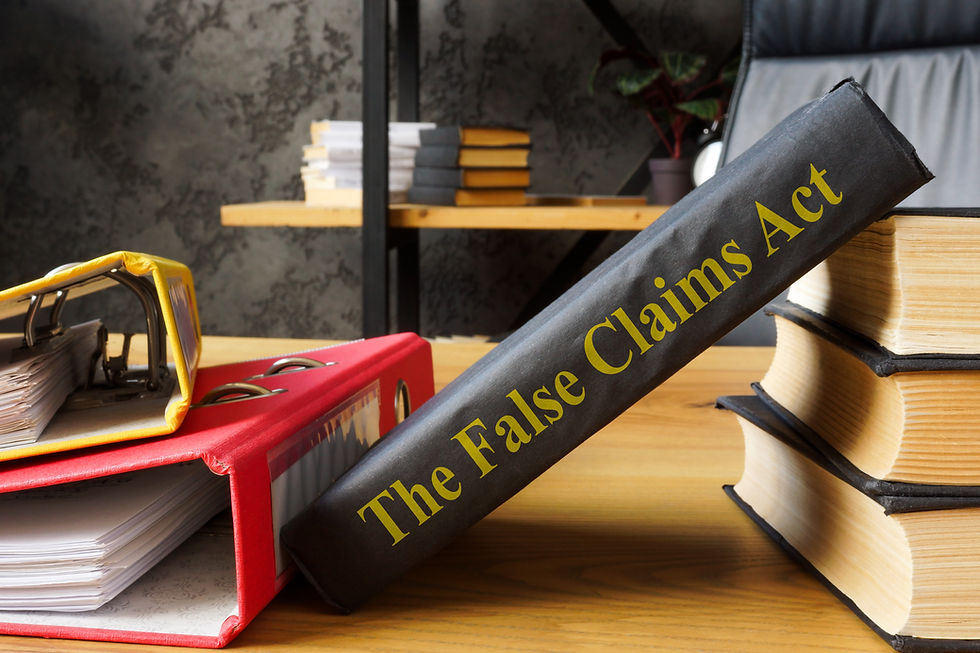Wrongfully Fired? Here’s How to Tell, Before It’s Too Late
- Robinson Law Offices

- Jul 28
- 4 min read
Wrongfully Fired? Here’s How to Tell, Before It’s Too Late
Losing your job is stressful enough without wondering whether it was legal. Many Arizona employees assume that because we are an “at-will” employment state, there is nothing they can do if they are fired unfairly. But “at-will” does not mean employers have unlimited power. Some terminations cross the line into wrongful termination, and if your firing was illegal, you may be entitled to damages.
Knowing the difference, acting quickly, and documenting the right information can protect your rights and your financial stability.
At-Will Employment vs. Wrongful Termination
“At-will” employment allows Arizona employers to terminate employees at any time, for almost any reason, or for no reason at all. However, employers cannot terminate employees for illegal reasons. They also cannot violate employment contracts especially if the contract is for a specified duration.
A termination becomes wrongful when it violates federal law, state law, public policy, or a binding employment contract. If this happens, you may have grounds to pursue compensation.
Signs Your Firing May Have Been Illegal
Employers often provide vague explanations for termination, leaving employees confused about whether the firing was legal. Here are clear situations where wrongful termination may have occurred:
Retaliation: Employers cannot fire you for engaging in protected activities. This includes reporting workplace discrimination or harassment, filing a workers’ compensation claim, reporting safety violations, complaining about unpaid wages, participating in an investigation regarding unlawful activity, taking a medical leave or requesting an accommodation. If your termination occurred soon after engaging in these activities, retaliation may have been the true motive.
Discrimination: Federal and Arizona laws prohibit termination based on race, color, national origin, religion, sex, pregnancy, disability, age (40 or older), or genetic information. For instance, if you were fired shortly after disclosing a pregnancy or requesting a medical accommodation, this may signal discriminatory termination.
Whistleblower Protections: Arizona law protects employees who report illegal conduct by their employers, whether to a government agency or internally. If you reported fraud, safety violations, or other illegal conduct and were terminated soon after, your firing may be unlawful.
Breach of Contract or Policy: Even in an at-will state, a clear employment contract specifying the length of your or conditions for termination may support a claim for wrongful termination.
Why Documentation Matters
If you believe your firing was illegal, preserving evidence immediately can strengthen your potential claim. It is important to act quickly because memories fade and critical documents can disappear once you leave your job.
Document the following:
Details of your termination: Note what was said, who was present, and when it occurred.
A timeline of key events: Record complaints you made, leave requests, HR reports, or protected activities leading up to your termination.
Relevant communications: Save emails, text messages, and performance reviews that show your job performance or employer’s reactions to your complaints or requests.
Witness information: Identify colleagues who may have seen or heard important conversations or actions related to your termination.
Good documentation can make a significant difference when your attorney evaluates whether your firing violated the law.
When You Should Call a Lawyer
Many people wait too long before seeking legal advice, believing they can handle the situation themselves or fearing it will be too costly. However, wrongful termination cases are time-sensitive. For example, discrimination claims often require filing with the Equal Employment Opportunity Commission (EEOC) or the Arizona Civil Rights Division within 180 or 300 days of your termination. Other wrongful termination claims may have different deadlines, and missing them can permanently prevent you from pursuing your claim.
Consulting with an employment lawyer can help you:
Determine whether your termination was illegal
Understand what evidence is necessary to pursue your claim
Navigate required filings with government agencies before you can sue in court
Evaluate whether to pursue negotiations or file a lawsuit to recover damages
Lawyers can also help protect you against potential retaliation from your employer if you pursue a claim.
What You May Recover in a Wrongful Termination Claim
If your termination was illegal, you may be entitled to:
Back pay for lost wages and benefits
Front pay if reinstatement is not practical
Compensation for emotional distress caused by your termination
Reinstatement to your position in certain cases
Attorney’s fees and court costs
Many employees believe they cannot prove wrongful termination without direct evidence of discrimination or retaliation. In reality, these cases often rely on timing, patterns of conduct, and inconsistencies in your employer’s stated reasons for termination. For example, if you were terminated soon after complaining about unpaid wages while being told your performance was the issue, but you have positive performance reviews, your claim may have merit.
You Don’t Have to Accept an Illegal Firing
If you’ve been fired and suspect the reason wasn’t legal, you don’t have to simply accept it and move on. Whether you were let go for speaking up, for asking for equal treatment, or for reasons that don’t add up, you deserve answers and you deserve a chance to fight back.
At Robinson Law Offices, we help Arizona workers hold employers accountable when they cross the line. From hourly workers to senior professionals, we know how to uncover the truth behind your termination and how to use the law to protect your rights.
You’ve worked too hard to let an illegal firing define your future. Let’s take the next step together.




Comments